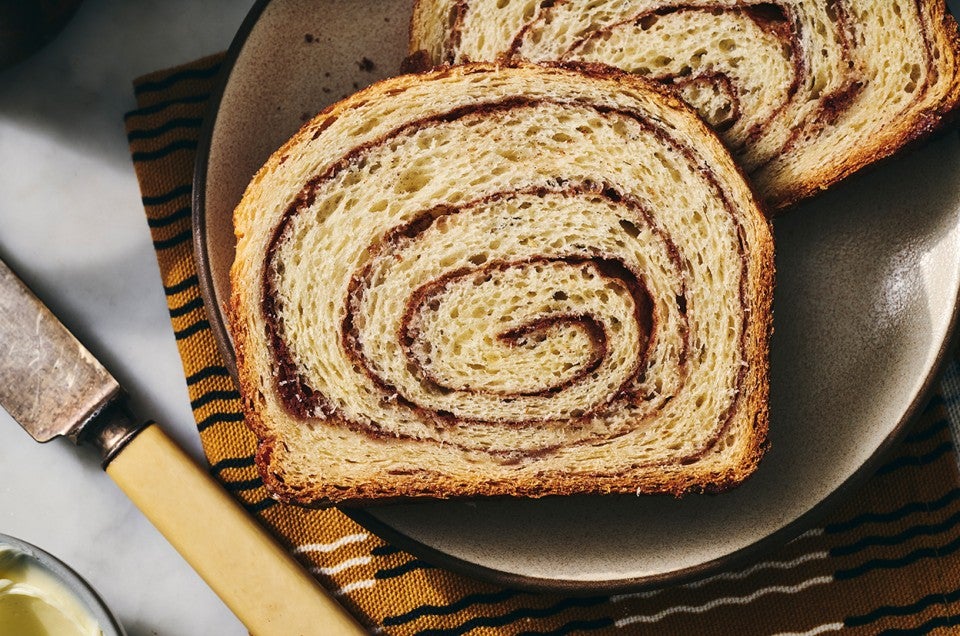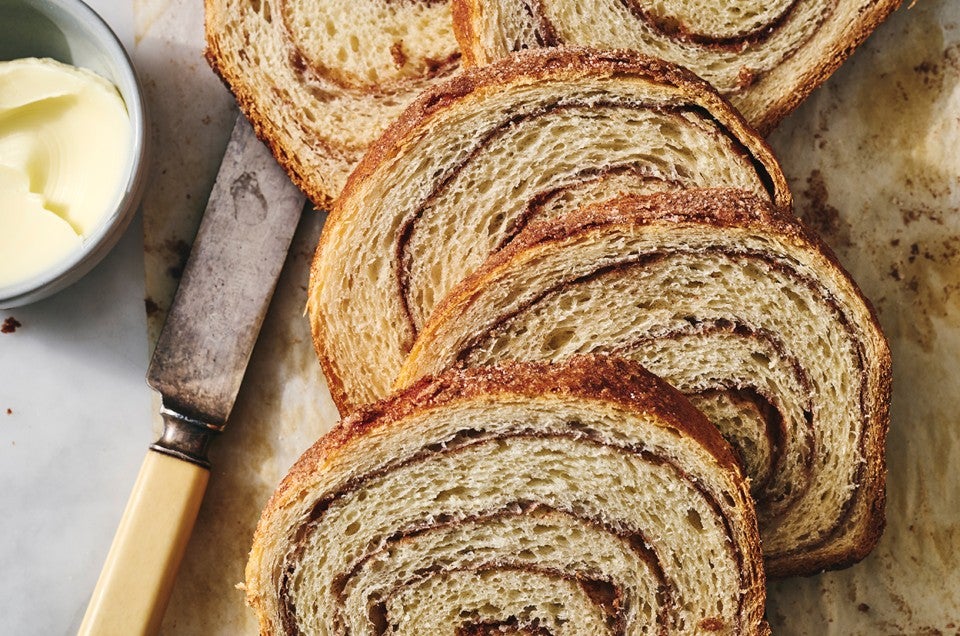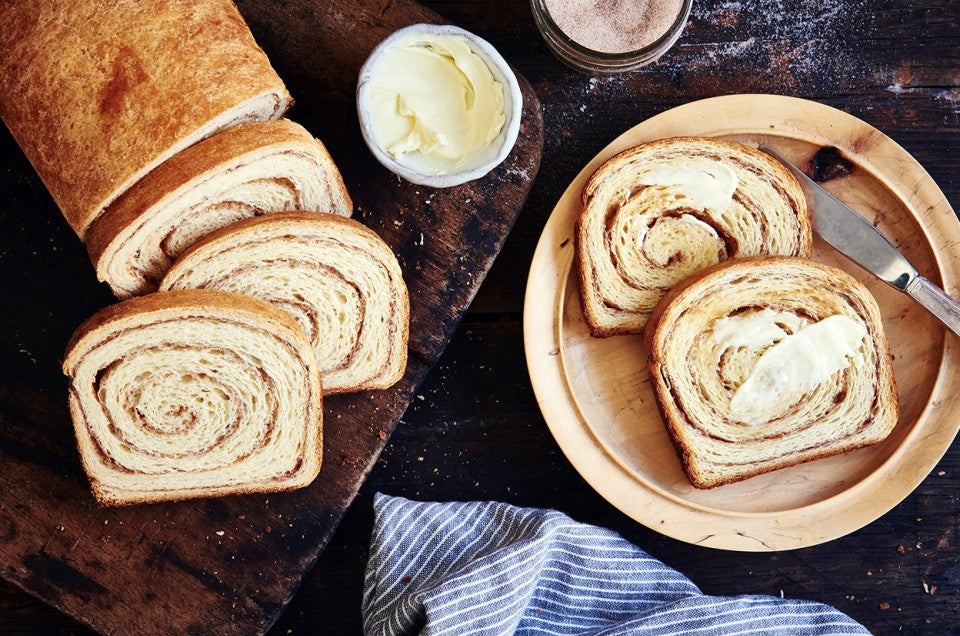Cinnamon Bread
This cinnamon bread is a soft white loaf with a lovely spiral of cinnamon sugar inside. It makes a delicious peanut butter and jelly sandwich. And, of course, cinnamon bread is the ideal choice for cinnamon toast.

This cinnamon bread is a soft white loaf with a lovely spiral of cinnamon sugar inside. It makes a delicious peanut butter and jelly sandwich. And, of course, cinnamon bread is the ideal choice for cinnamon toast.







To make the dough: Weigh your flour; or measure it by gently spooning it into a cup, then sweeping off any excess. Combine all of the dough ingredients. Mix and knead everything together — by hand, mixer or bread machine set on the dough cycle — till you've made a smooth dough. Adjust the dough's consistency with additional flour or water as needed; but remember, the more flour you add while you're kneading, the heavier and drier your final loaf will be. If you're kneading in a stand mixer, it should take about 7 minutes at second speed, and the dough should barely clean the sides of the bowl, perhaps sticking a bit at the bottom. In a bread machine (or by hand), it should form a smooth ball.
Place the dough in a lightly greased bowl. Cover the bowl, and allow the dough to rise, at room temperature, until it's nearly doubled in bulk, about 1 hour. Rising may take longer, especially if you've kneaded by hand. Give it enough time to become quite puffy.
To make the filling: While the dough is rising, make the filling by stirring together the sugar, cinnamon, and flour.
To fill and shape the cinnamon bread: Transfer the dough to a lightly greased work surface, and pat it into a 6" x 20" rectangle.
Brush the dough with the egg/water mixture, and sprinkle it evenly with the filling.
Starting with a short end, roll the dough into a log. Pinch the ends to seal, and pinch the long seam closed.
Transfer the log, seam-side down, to a lightly greased 8 1/2" x 4 1/2" loaf pan. Tent the pan loosely with lightly greased plastic wrap.
Allow the bread to rise until it's crested about 1" over the rim of the pan, about 1 hour. Again, it may rise more slowly for you; let it rise till it's 1" over the rim of the pan, even if that takes longer than an hour. While the dough is rising, preheat the oven to 350°F.
Bake the bread for 40 to 45 minutes, tenting it lightly with aluminum foil after the first 15 minutes. The bread's crust will be golden brown, and the interior of the finished loaf should measure 190°F on a digital thermometer.
Remove the cinnamon bread from the oven, and gently loosen the edges with a heatproof spatula or table knife. Turn it out of the pan, and brush the top surface with butter, if desired; this will give it a soft, satiny crust. Allow the bread to cool completely before slicing.
Store cinnamon bread, well wrapped, at room temperature for several days; freeze for longer storage.
Don't skip the step of brushing the dough with the egg/water wash before sprinkling on the filling. The egg is what keeps the cinnamon bread from "gapping" around the filling.
From amaranth to teff and more, ancient grains offer a world of baking possibilities. Want to learn how to incorporate these special grains into some of your favorite recipes for muffins, scones, pancakes, and bread? See our Baking With Ancient Grains Guide.

View our privacy policy

